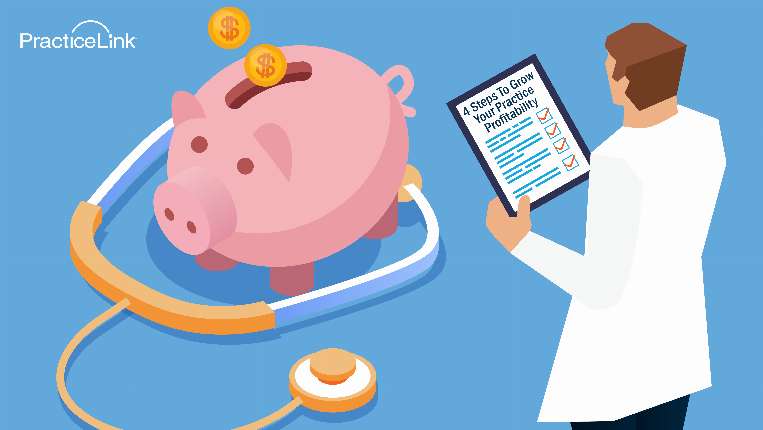4 steps to grow your practice profitability without increasing patient volume
 Posted by Dr. Omolara Uwemedimo
Posted by Dr. Omolara Uwemedimo

Since the beginning of time, the work of health care providers has been viewed as a labor of love. Rarely are those who work in the profession prioritized and set up to thrive without running themselves into the ground. In particular, for BIPOC physicians and health care providers who serve under-resourced communities, it can cost them their financial security and mental health. But it doesn’t have to. You can have a profitable business serving those who need it most and not sacrifice your well-being.
After serving as a board-certified pediatrician for more than 20 years, my life changed when I received an M.S. diagnosis in 2019. My physical and mental health could not sustain my long hours and even longer days as a professor, researcher and pediatrician. So, I became a health care consultant to community clinics, and in less than two years, I secured more than $1 million in funding - without any loans or investors. Over the last 5 years, that number has increased to $3.7 million in contracts and grants. This work led me to create Melanin & Medicine, where I teach other BIPOC physicians and healthcare providers how to secure grants, contracts and alternative payments to help them scale and increase their impact serving communities of color, without the burnout that can come with patient care.
Unfortunately, it’s common for health care professionals to experience mental health problems. In September 2020, the Centers for Disease Control & Prevention reported that 69% of physicians experienced depression, 13% had thoughts of suicide and 64% were women physicians who reported feeling burnout. While these rates increased after the Covid-19 pandemic, even before then, healthcare workers disproportionately experienced poor mental health outcomes.
Often when providers try to grow profitability in their practice, they usually focus on seeing more patients which tends to lead to burnout and decreases in quality. However, there’s a better, more efficient way and the solution is to source outside revenue streams from community partnerships through contracts and grants. Here are four steps to take to grow your practice profitability and still create a significant impact on communities in need.
- Position your organization
Create a toolkit to prove why your practice is the ideal candidate to execute the community solution you’re proposing. It’s vital to demonstrate your strong leadership, expertise, collaborative history (e.g., case studies), mission-driven approach and outstanding records of accomplishments to establish your organization as the best partner to work with.
- Identify and target aligned partners
Identifying and targeting aligned partners is a crucial step for seeking funding through community partnerships. Research potential partner organizations that share similar missions, values and goals. Identifying nonprofit organizations that provide human services can be particularly strong alliances that tend to impact underserved communities. Then, propose a discovery call to see if there’s alignment and explore collaborative opportunities. Gain insight into the partner’s core objectives, target population, existing community relationships and previous partnerships. If the prospective partner is well aligned it can significantly bolster the likelihood of you securing funding, enabling you both to collectively address community needs and drive positive health outcomes.
- Build and package your foundational assets
Compile a set of essential materials that showcase your mission, programs and impact to potential partners and funding organizations. By having a well-prepared and adaptable package of materials - like an introductory email, messaging points and your clearly defined value proposition - you can efficiently respond to funding opportunities and ensure a consistent and compelling presentation of your proposal.
Present your promise
Articulate the promise of your proposed partnership in a clear and persuasive way. This instills confidence in potential funders and also solidifies your position as a reliable and valuable partner. Be prepared to show how your proposal will positively impact the audience and community you’re serving. Remember to highlight how collaborating with you can lead to cost savings, optimized use of staff resources and efficient utilization of time.
These steps are just a start to generating partnerships that take your business to the next level.
As healthcare providers, we shouldn’t have to sacrifice who we serve to have profitable businesses. We can excel in both areas. And when we build sustainable and scalable practices, it gives us the freedom to help under-resourced communities and have less financial stress while doing so. Profit and purpose are not mutually exclusive. Create impact without sacrificing your peace.
Omolara T. Uwemedimo, MD, MPH, FAAP, is a board-certified pediatrician, public health professor and a 2nd generation Nigerian immigrant. She has over 20 years experience working in low-income countries across Africa, Asia and Latin America, which inspired her to build her award-winning, multi-site practice, Strong Children Wellness, which provides integrated care to low-income children and families in New York City. Dr. Uwemedimo also leads Melanin & Medicine, a consulting agency helping BIPOC clinicians grow their practices profitably while serving under-resourced communities to make a powerful impact in communities of color. Learn more at melaninandmedicine.co.

